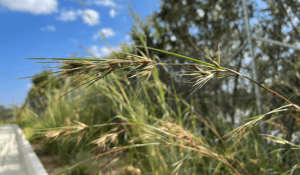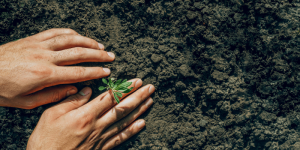Innovative techniques and practices are employed in fruit and vegetable farming to improve efficiency, maximise yields, enhance quality, and promote sustainable agriculture. Innovation has always been a driving force behind the progress of agriculture, enabling us to feed an ever-growing global population.
The Department of Agriculture, Fisheries and Forestry (DAFF), states that Australian agricultural innovation is world-leading. This blog will discuss examples of agriculture innovation in Australia, including hydroponics, precision agriculture and urban farming and the benefits to Australian food producers.
Green Endeavour highly regards innovation and having a continuous improvement mindset. We strive to challenge the status quo and have an open mindset to embrace change. Innovation is nurtured and encouraged internally with our staff and externally with the farms we work directly with.
Precision Agriculture: The Art of Data-Driven Farming
Innovation in fruit and vegetable farming goes beyond cultivation methods; it extends to data-driven decision-making. Precision agriculture leverages technologies like Internet of Things (IoT), sensors, drones, robotics and artificial intelligence (AI) to monitor crops and optimise farming practices.
Below are some examples:
Sensor Networks:

Sensors can measure soil moisture levels, temperature, nutrient content, and pH levels, allowing farmers to tailor irrigation and fertilisation precisely. Sensors placed within crops help ensure optimal growing conditions and provide real-time data assisting producers to make informed decisions. Advanced sensors linked to automated control systems can even monitor environmental conditions and automate responses.
Sensors can monitor and record plants’ stem diameter, sap flow rates, fruit growth rates and leaf temperature (The Rural Industries Research and Development Corporation, 2016). Growers can then use this information to support decision-making and detect plant stress early (RIRDC, 2016). Sensors can also monitor growing conditions in the field, providing real-time information to predict pest or disease outbreaks and overnight frosts and providing early warning to implement mitigation (RIRDC, 2016).
The University of Sydney (2016) has developed a prototype robot, RIPPA (Robot for Intelligent Perception and Precision Application), that moves through vegetable crops using sensors to classify each detected plant as a weed or seedling. Based on the data, RIPPA autonomously applies herbicide directly to the weeds.
Robotics:
According to the Department of Agriculture and Fisheries (DAF), robotic technologies deliver solutions to labour shortage issues. They are vital to maintaining Queensland as a world leader in sustainable agriculture.
Robotic arms are being used to pick apples, gather strawberries, harvest lettuce and remove weeds. These machines have motors and sensors to carry out operational tasks while intelligently responding to their environment.
Drones:

Eyes on the sky, decisions on the ground! Drones or Unmanned Aerial Vehicles (UAVs) are being implemented on a range of innovative farms across Queensland. These technologies have the potential to improve crop yield and support asset management.
The benefits of implementing these systems include their low cost, lightweight design, accurate data collection ability and the ability to pilot remotely (Department of Agriculture and Fisheries, 2023).
In Queensland farming, drones are being used to help sugarcane growers with weed spraying and field mapping. The DAF Coastal Farming Systems team worked with Tully sugarcane farmer Dick Camilleri to test drones as a precise farming tool (DAF, 2023). The success of the research led to a partnership with Innisfail Canegrowers and the purchase of a spray drone (DAF, 2023).
Hydroponics: Cultivating Produce without Soil
Hydroponics is a soilless cultivation method that involves growing plants in nutrient-rich water, allowing their roots to directly absorb the necessary elements for growth. Green Endeavour brands Suncoast Fresh and Fruitlink source premium lettuce varieties from a fantastic local hydroponic farm less than an hour from the Brisbane warehouse.
This technique offers numerous advantages, including the following:
Water Efficiency:
Hydroponic systems are uniquely designed to run independently of soil (Hyalite, 2020). Therefore, they often use less water than traditional farming methods since water is recirculated within the system.
Nutrient Control:
Hydroponic set-ups allow precise control over nutrient levels and pH, ensuring that plants receive the optimal nutrients for their growth, which leads to fast growth, high yields, and good overall plant health.
Reduced Pest and Disease Pressure:
Since hydroponics is typically soil-free, they can be less susceptible to soil-borne pests and diseases. The need for chemical pesticides and fungicides is reduced by not using soil, making it an environmentally friendly approach.
Year-Round Cultivation:
Hydroponic systems can be set up indoors or in controlled environments. A controlled setting can allow for year-round cultivation regardless of external weather conditions, providing a stable and predictable supply of fresh produce.

Urban Agriculture: Growing Food Where It’s Needed
With more and more of the world’s population becoming urbanised, urban farming has gained significant traction. Urban farms utilise unused spaces within cities, such as rooftops, balconies, and vacant lots, to grow fruits and vegetables.
By reducing food miles, urban farming minimises the carbon footprint associated with food transport and distribution. Additionally, urban farms maximise small spaces through techniques like hydroponics and vertical farming.
Rooftop gardens have also gained popularity in recent years. The ability to grow food in an urban area that would have otherwise been bare or unproductive helps reconnect people with their food, increase biodiversity and reduces the Urban Heat Island effect. You can read more about the benefits of rooftop gardens and Green Endeavour’s rooftop oasis in our blog here.
Innovation continues to drive the evolution of fruit and vegetable farming, addressing challenges related to land scarcity, resource efficiency, and urbanisation. Hydroponics, precision agriculture, and urban farming are just some of the groundbreaking techniques that have been employed to innovate within this sector. As we look to the future, embracing and further developing such innovative approaches is imperative to ensure a flourishing and resilient agricultural sector for future generations.
References:
Department of Agriculture and Fisheries. (2023). Drone and mapping tech. Queensland Government. https://www.daf.qld.gov.au/news-media/campaigns/agtech/action/research/drones-mapping
Department of Agriculture and Fisheries. (2023b). Robotics. Queensland Government. https://www.daf.qld.gov.au/news-media/campaigns/agtech/action/future/robots
Hyalite. (2020, July 28). Australia’s largest indoor garden and hydroponics specialists. Hyalite Australia. https://hyalite.com.au/blog/how-hydroponic-farming-can-benefit-the-environment
Rural Industries Research & Development Corporation. (2016). Sensors. Agrifutures Australia. https://agrifutures.com.au/wp-content/uploads/publications/16-032.pdf



